How air travel has been transformed in the last 100 years
The ways flying has changed
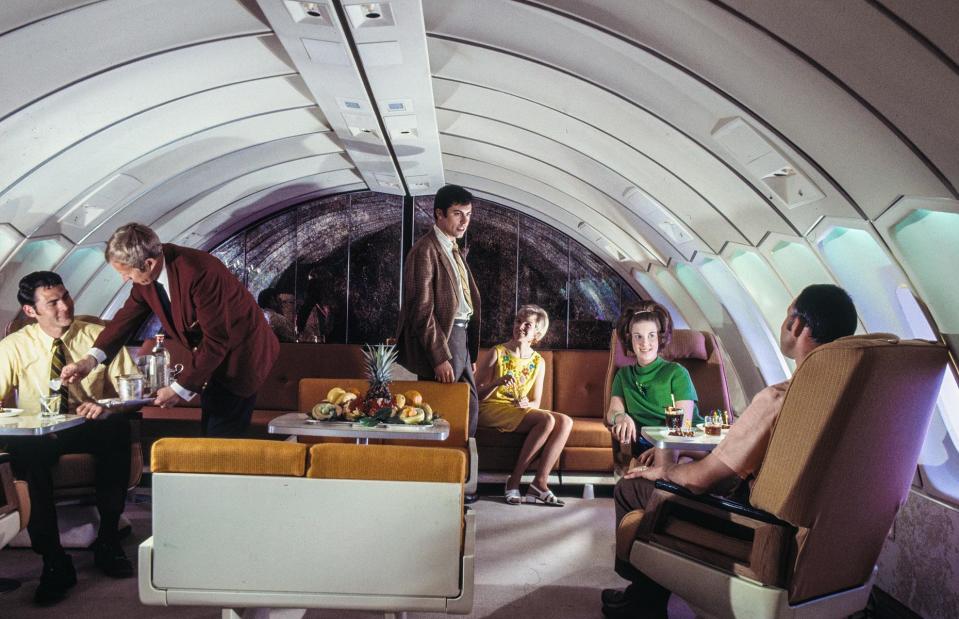
SAS Museet/Flickr/CC BY-SA 2.0
Since the first commercial flight in 1914, air travel has changed a lot. From steak dinners served in the cabin and smoking allowed on board to leafy airports home to giant indoor waterfalls, going by plane has been transformed over the years (in good ways and bad).
Read on to see how air travel has changed during the last century...
More people are flying than ever before

Have a nice day Photo/Shutterstock
In the so-called golden age of travel, from the 1950s to the 1980s, taking to the air was an experience reserved for the most privileged in society. Seats were routinely empty, in stark contrast to the modern elbow-to-elbow experience. Now, more than eight million people travel by plane every single day. The year 2020 saw a huge dip in demand, with the COVID-19 outbreak causing travel bans and restrictions. Since then, however, flying has bounced back to pre-pandemic levels and has continued on its upward trajectory.
The 5-star treatment on board is no more

SAS Scandinavian Archives/Wikimedia Commons
Economy class didn't exist before the 1950s and all passengers were treated to a luxury in-flight experience as standard. Meals, complimentary magazines and drinks were all provided. Flight attendants would even recline the seats of dozing travellers. Today, if you want this kind of luxury you need to buy your way into the First Class cabin.
There were no budget airlines

gabriel12/Shutterstock
All-out luxury didn't come cheap but over the years, plane tickets have – generally speaking – become far more affordable. The average cost of a plane ticket has decreased considerably since the 1950s with the introduction of economy class and the rise of budget carriers. Since the pandemic though, many airlines have struggled to get back to profitability and passengers have felt the knock-on effect of this in the cost of fares.
You could smoke on board
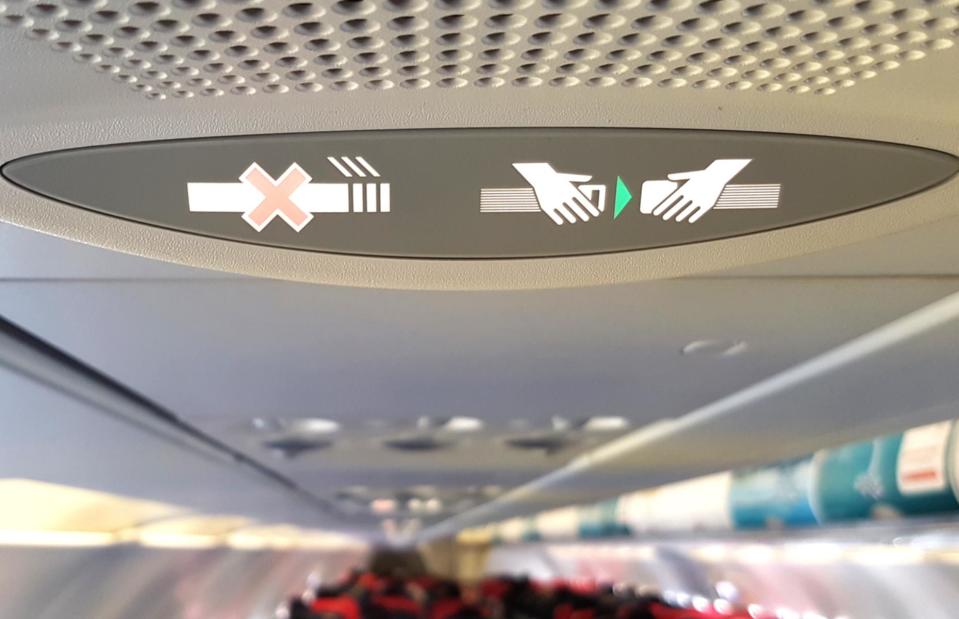
Laboo Studio/Shutterstock
Once upon a time, your entire flight would have passed by in a haze of smoke. It was perfectly acceptable to smoke cigarettes on planes and cabins were often divided into smoking and non-smoking sections. British Airways began a trial ban on smoking during flights in 1990, with Virgin and United Airlines soon following suit. It wasn’t until the late 1990s that smoking on all flights was banned.
The alcohol was free-flowing
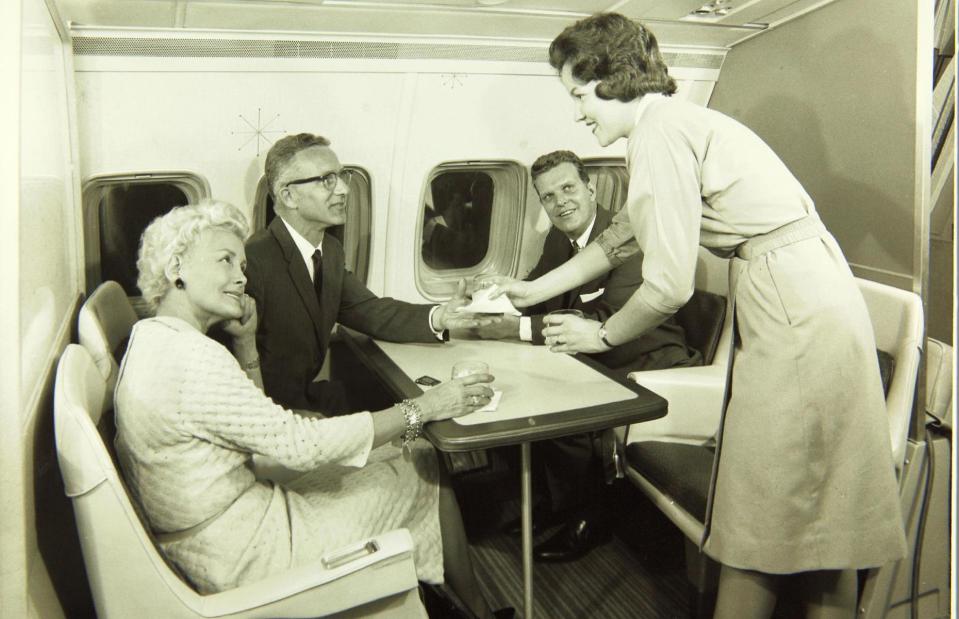
SDASM Archives/Flickr
Most airlines offered a near-endless drinks service. Passengers would spend their journey sipping wine, cocktails and Champagne throughout the flight. Today it's a criminal offence to be drunk on an aircraft, punishable with up to two years in prison.
Life on board was one big party
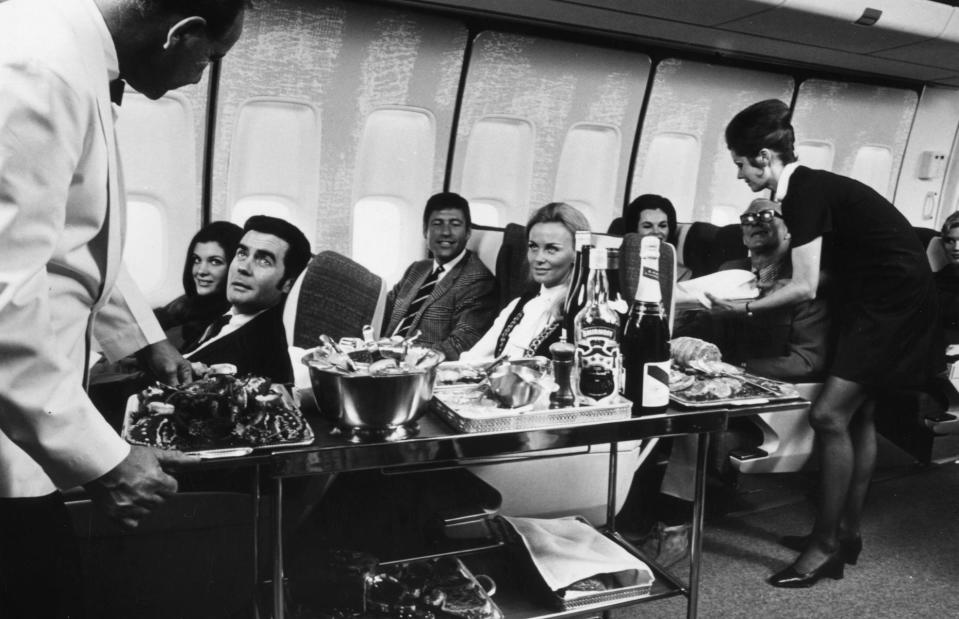
Fox Photos/Getty Images
It wasn't uncommon for planes to have bars on board, giving travellers a chance to relax with a drink. Some lounges even had pianos. Now, this luxury is reserved for only the swankiest of aircraft.
You could visit the cockpit
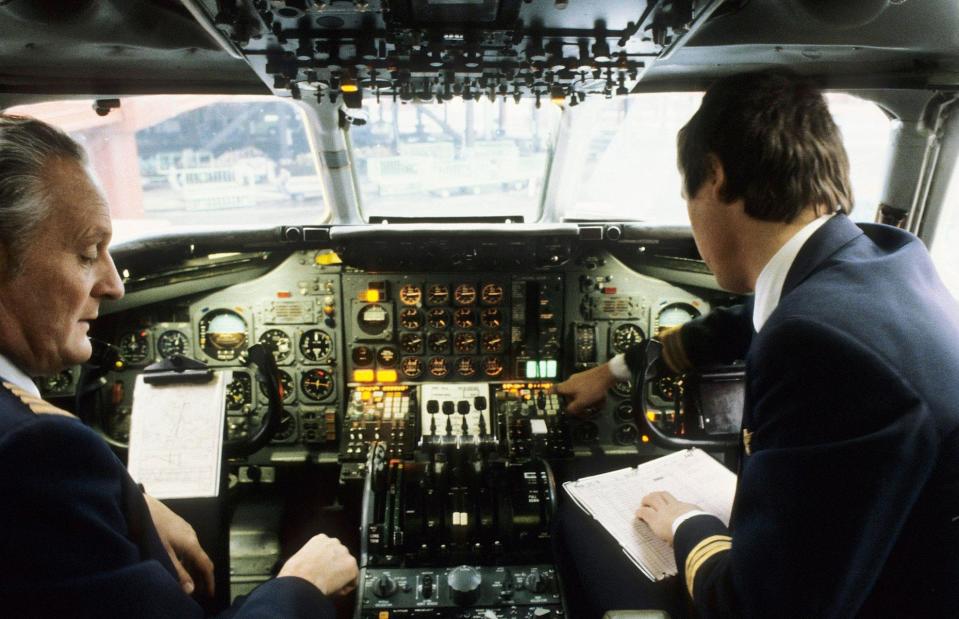
Classic Picture Library/Alamy Stock Photo
In times gone by, passengers could visit the cockpit and sometimes sit up front for take-off or landing. This policy still differs from airline to airline, but cockpit security was seriously ramped up following the attacks of 9/11. Today, for the most part, cockpit doors are firmly closed to the public and even cabin crew.
You never went hungry
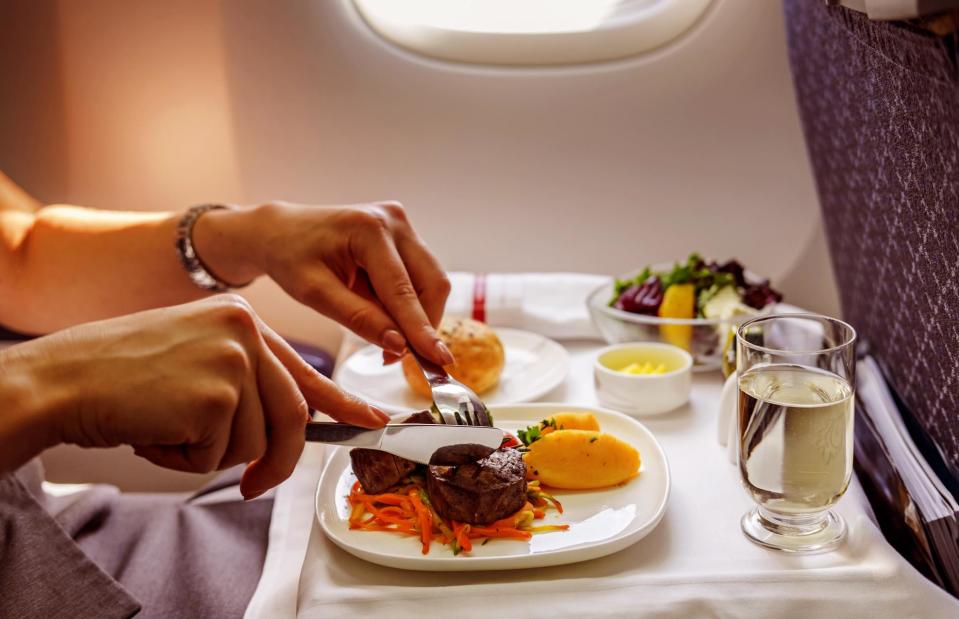
Aureliy/Shutterstock
On most flights, a sit-down dinner was part of the experience. Menus often included extravagant dishes like steak, and it was not uncommon for the meat to be carved seat-side. British Airways and KLM Royal Dutch Airlines were just a couple of airlines to offer this personal service.
The interior design was more creative
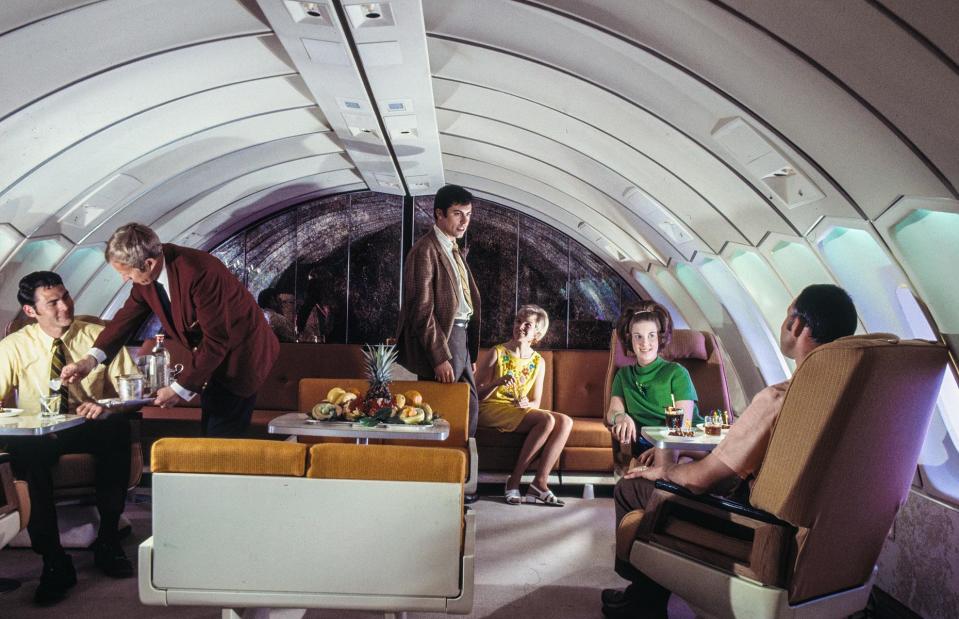
SAS Museet/Flickr/CC BY-SA 2.0
Pictures on the walls. Vases of fresh flowers. White tablecloths. No expense was spared when it came to decorating plane cabins. The finished result was far from the clinical look today and most touches, like flowers, would now constitute a health and safety hazard.
There were more home comforts

Andrew Makedonski/Shutterstock
In today's economy class, most airlines will provide a scratchy blanket and a thin pillow during long-haul flights. But during the 1950s and 1960s, passengers would receive all manner of complimentary comforts, from plush cushions and blankets to toys for children.
There was plenty of space
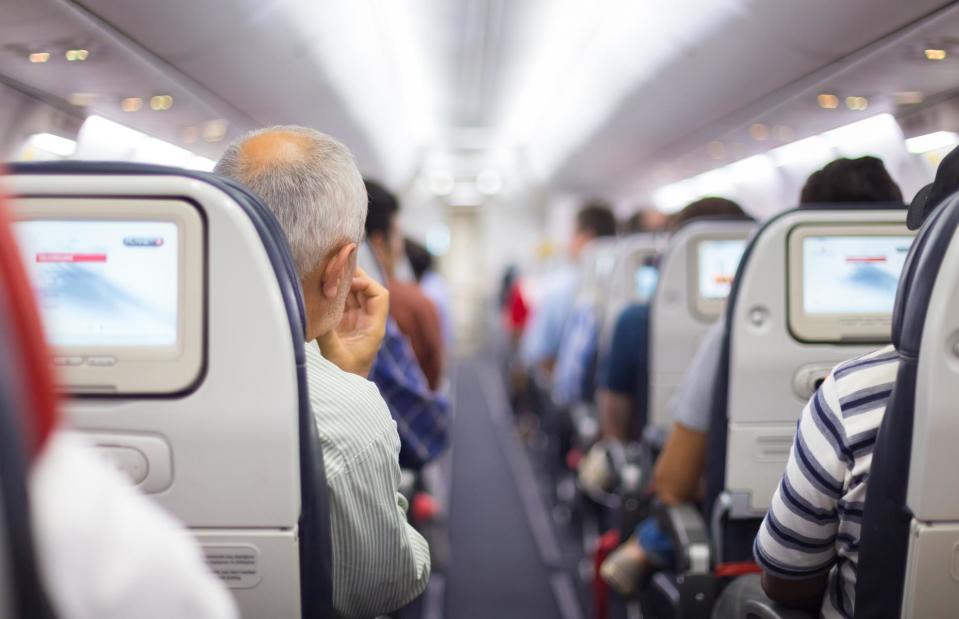
Matej Kastelic/Shutterstock
Nowadays, you'll usually be sat elbow-to-elbow with the person next to you. It wasn't always like this. Aisles used to be wider, there was more leg room and no overhead storage meant the ceiling felt higher too. In the 1970s, the Boeing 747 (now out of service) even had two decks.
Flights could be up to 12 days long
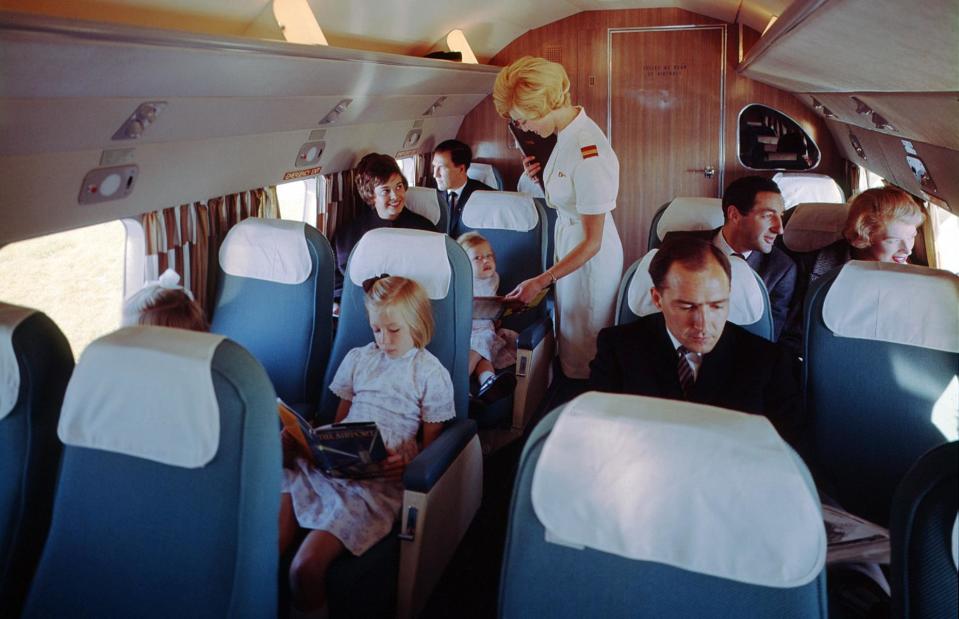
Archives New Zealand/Flickr/CC BY 2.0
Today you can reach Australia from the UK in less than 20 hours. You can even take a non-stop flight from London to Perth, after the service was introduced in 2018. It's still a long time to be in the air but a trip to Oz used to take much longer. In 1935, the first Qantas flight from the UK to Australia (known as the Kangaroo Route) lasted 12 days, with multiple stops. Good thing there was all that free food and drinks to keep passengers entertained.
The whole plane watched a movie together
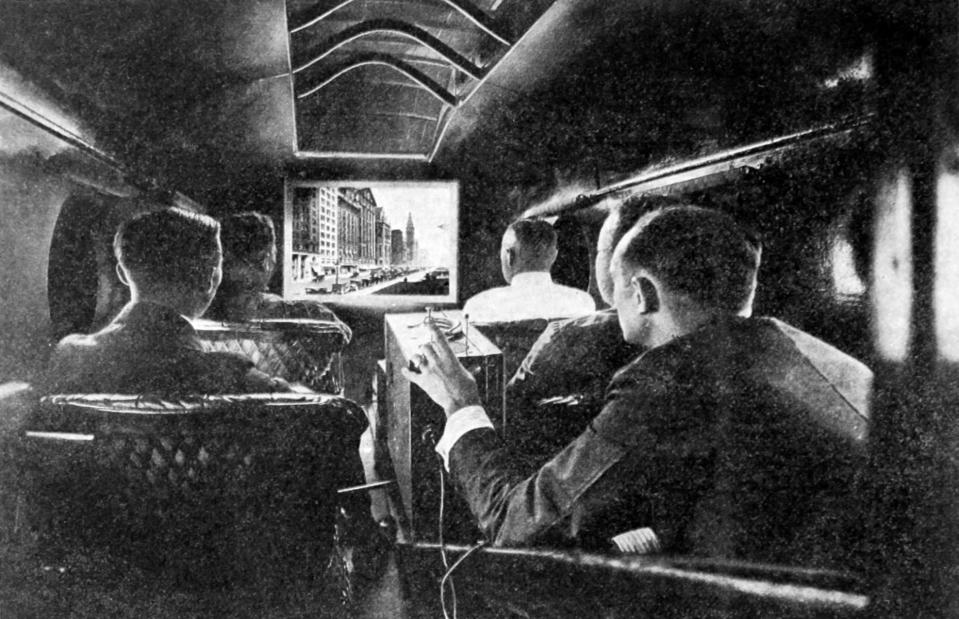
Rothacker Film Company/Wikimedia Commons
In 1925, silent movie The Lost World became the one of the first blockbusters to be shown in the air. It involved a whole lot of equipment and passengers had to crane their necks to watch a single screen. In-flight movies weren't commonplace until the 1960s when Trans World Airlines showed drama By Love Possessed.
You could sleep in comfort

Fox Photos/Getty Images
Spacious sleeper berths used to be commonplace. United's historic Mainliner Sleeper planes, which date back to the 1930s, were a vacation in themselves. They offered 6.5-foot-long (2m) twin beds and separate changing rooms for men and women to prepare for a good night's sleep. Of course, many modern airlines offer convertible chair-beds on their planes but these come at an additional cost (unless, of course, you're lucky enough to get a free upgrade).
You were presented with a postcard after take-off
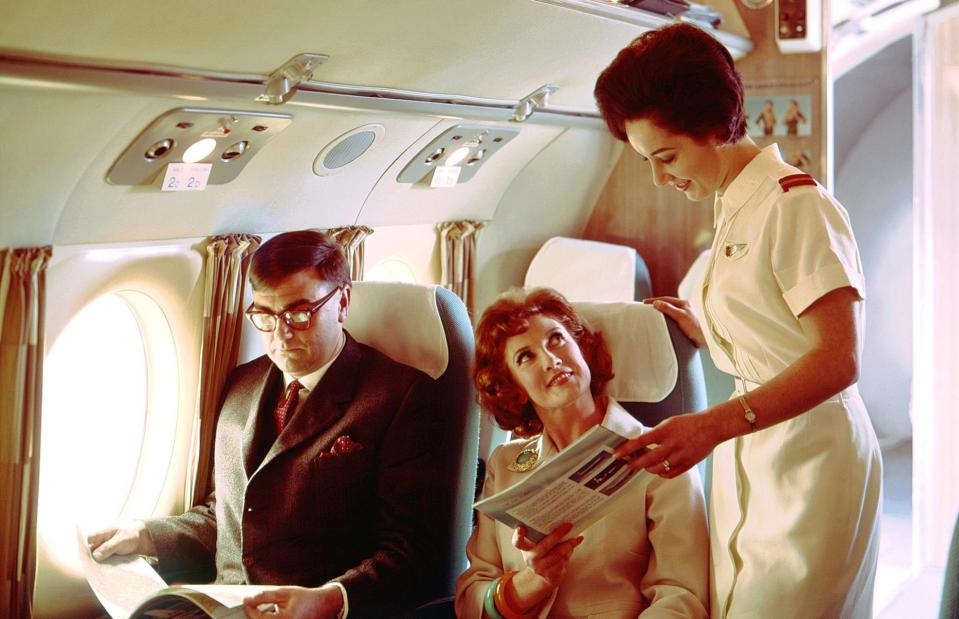
Archives New Zealand/Wikimedia Commons
During the 1950s and 1960s, passengers were presented with a postcard once on board. Flying was still a great novelty and the postcards often included a picture of the plane or the food served on board. These days, they're something of a collector's item.
There was a dress code
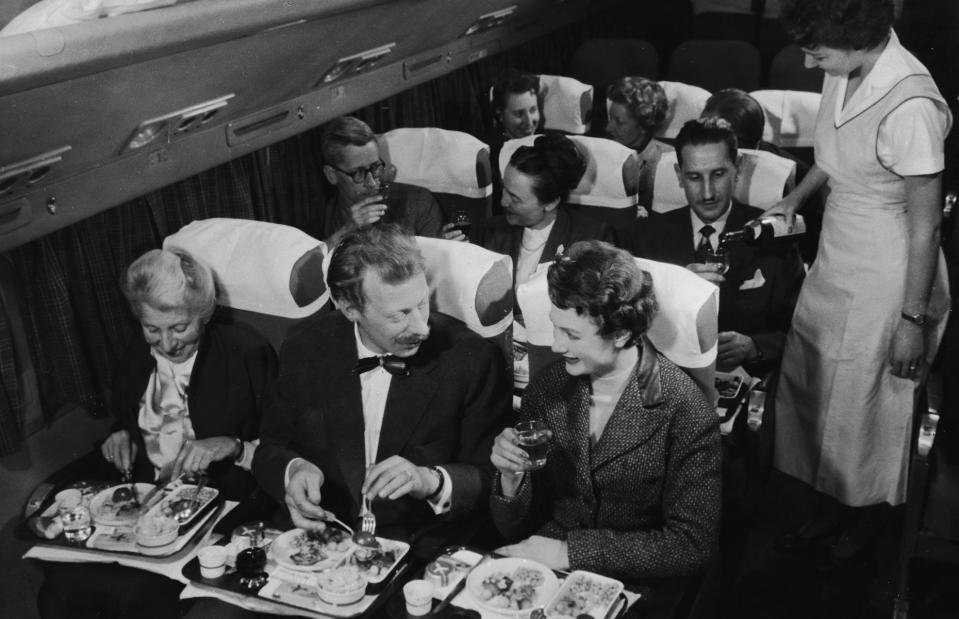
Frederic Lewis/Getty Images
Most of today's plane passengers dress for comfort – think slouchy jumpers and jeans. But people used to dress to impress when they were flying, with men sporting a suit and tie and women their finest frock. It wasn't unheard of for passengers to be turned away if they were deemed underdressed.
Turbulence could get pretty bad

TIM SLOAN/AFP via Getty Images
Before the 1950s, all commercial planes were powered by pistons and weren't able to travel at such high altitudes as today's carriers. It made for a pretty bumpy, noisy and often frightening ride.
Flight safety regulations weren't as strict
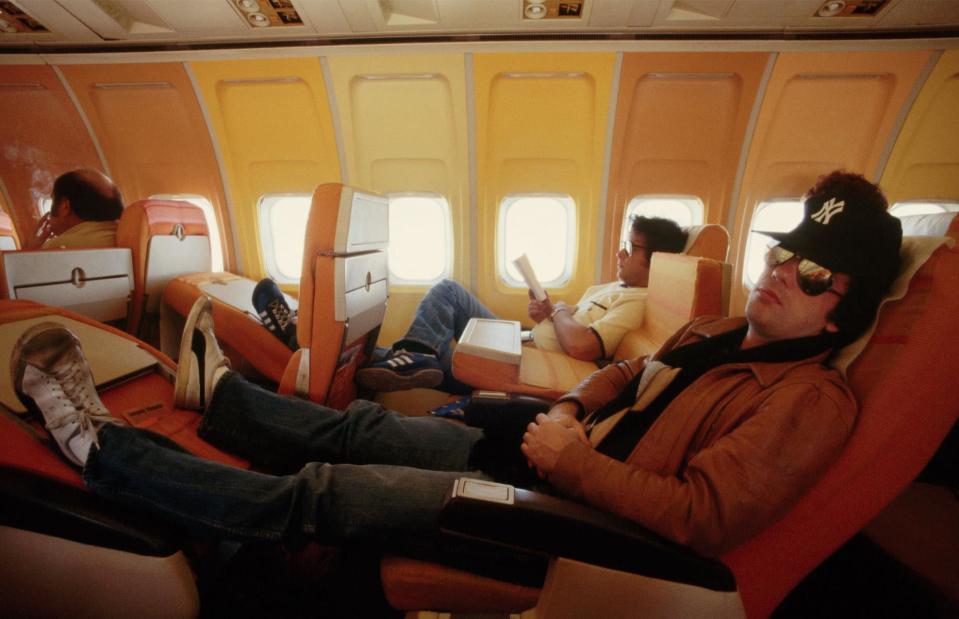
Wally McNamee/CORBIS/Corbis via Getty Images
Flight safety today is rigorously enforced by cabin crew but this hasn't always been the case. Back in the day, flight attendants' jobs were more to provide comfort rather than protection. Many things that would be classed as hazardous today (think strewn luggage and children running about) were commonplace before the 1990s.
There used to be 'hostesses'
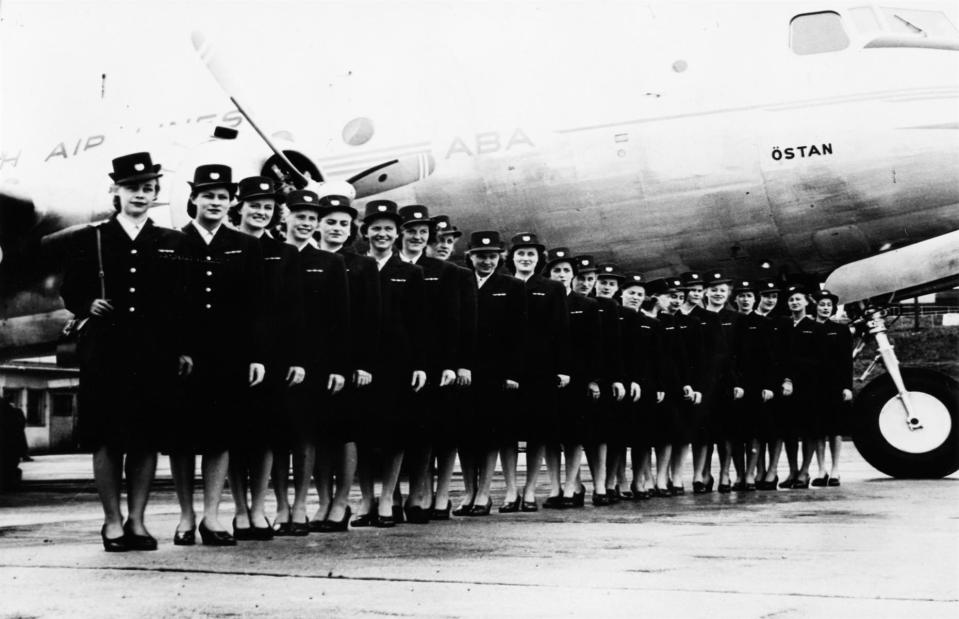
Archive PL/Alamy Stock Photo
Old adverts for 'air hostesses' used to specify that applicants should be women and many included stipulations on height, weight, age and relationship status. The Stewardesses for Women’s Rights group was formed in 1972 to help combat inequality but the gender-neutral term 'flight attendant' didn't come into common use until 1988.
Crashes were more frequent
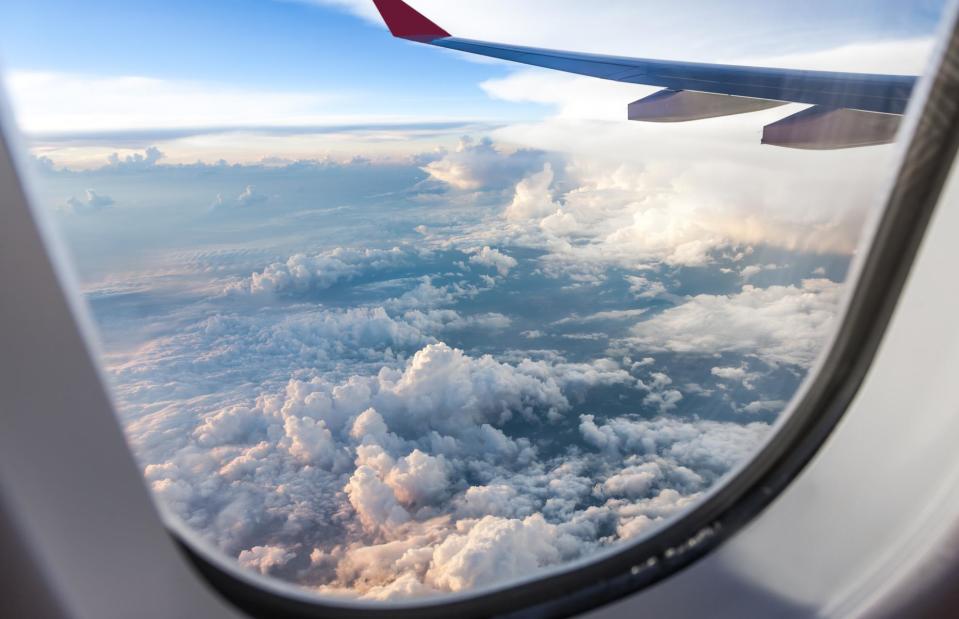
06photo/Shutterstock
Today, flying is one of the safest ways to travel but it wasn't always so reliable. Through the 1950s and 1960s, there was an average of four major crashes every year. In contrast, 2023 has been reported as the safest year for air travel on record.
You didn't have to arrive so early

Chronicle/Alamy Stock Photo
Most airlines recommend you arrive at least two hours before your flight, allowing enough time for the lengthy security process. It's difficult to imagine that in the US, prior to the 1970s, passenger screening was barely conducted at all. It wasn't until after the September 11th attacks in 2001 that safety checks became truly rigorous, in the USA and beyond.
Baggage claim was a lengthy affair
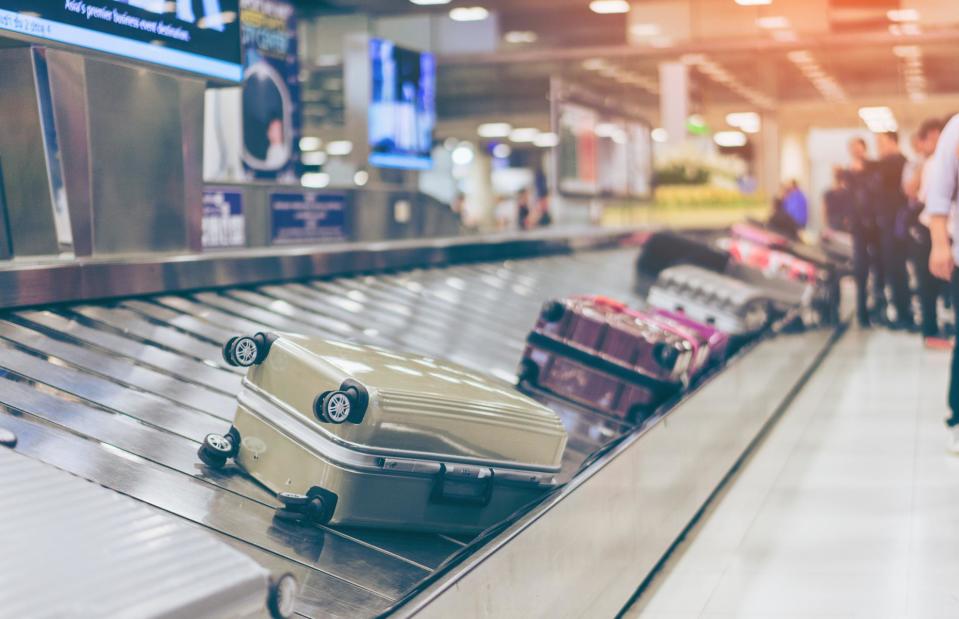
Travel man/Shutterstock
After disembarking a plane, modern passengers wait patiently by the conveyor belt, hoping their luggage wasn't lost in transit. But it wasn't always such a smooth pick-up. Porters organised all the luggage by hand and travellers would have to request their bags from the pile one after the other, each giving the worker a generous tip.
You could pass through security even if you weren't travelling
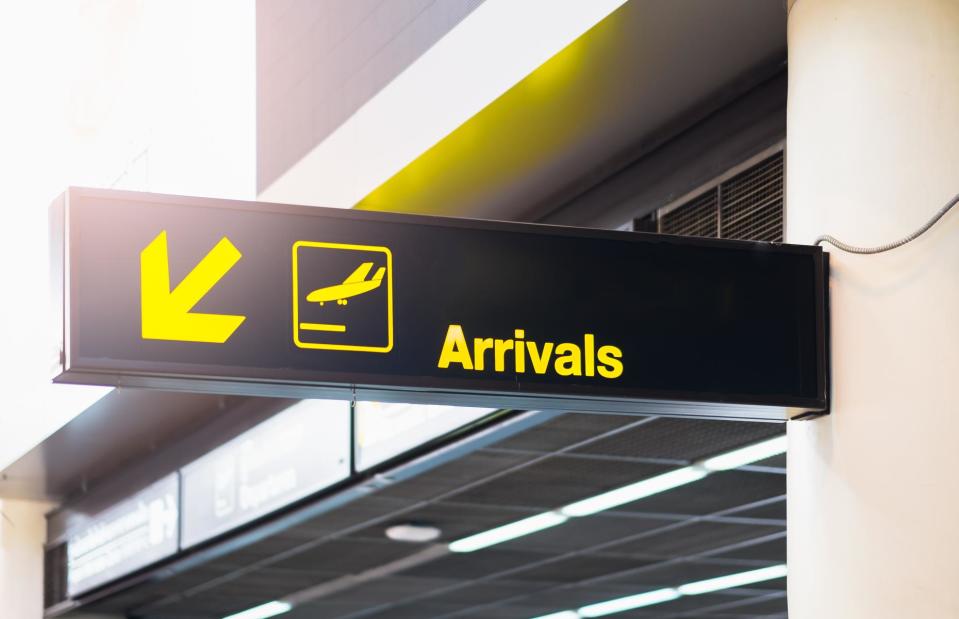
Thaspol Sangsee/Shutterstock
Prior to 2001, many airports allowed non-passengers to move through security so they could see their relatives onto the plane, or meet them before baggage claim upon their return. Nowadays, you're no longer permitted to wait for incoming passengers beyond security unless there are special circumstances.
You could take on as many bags as you wanted

sumroeng chinnapan/Shutterstock
Before the 1980s, there was no limit on luggage. A lack of overhead storage in the cabin meant they usually went in the hold. Today, hefty baggage fees mean most savvy travellers pack light.
You could take anything on board
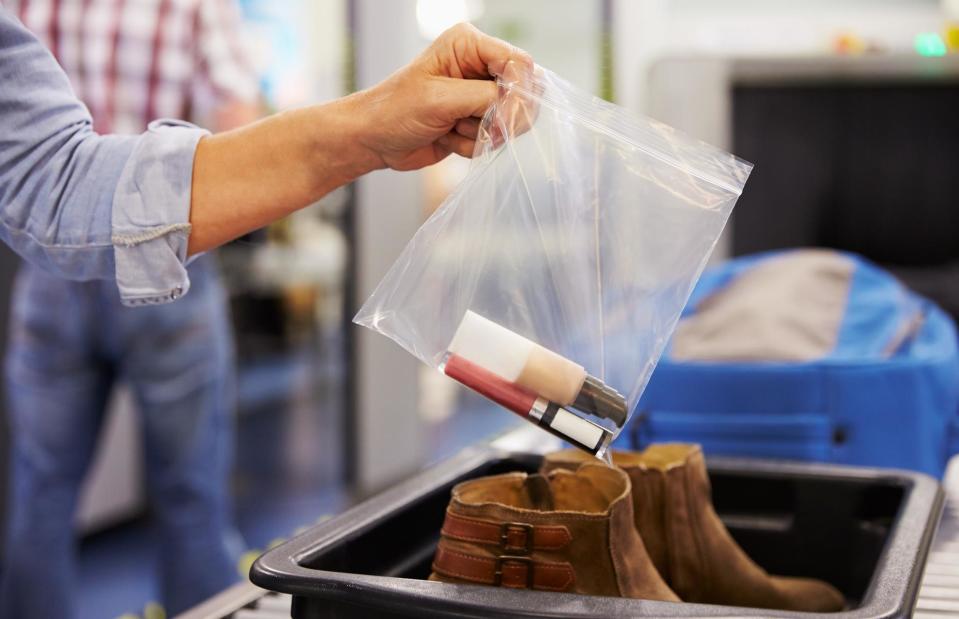
Monkey Business Images/Shutterstock
A giant shower gel bottle. A craft knife. A bottle of gin. In the past, you could take pretty much anything on board a plane. It wasn't until 2006 that the regulations surrounding liquids really tightened. Today, liquid bottles brought on board must be no more than 100ml, although some smaller airports in the UK have been trialling new 3D scanners with a view to scrap the 100ml rule in the future.
You could be an original 'jet-setter'

ZUMA Press, Inc./Alamy Stock Photo
A lot has changed since the first commercial flight in 1914 (a domestic jaunt from St Petersburg to Tampa in Florida). One of the biggest shifts in commercial aircraft history was the move from piston to jet engines in the 1950s, which is where we get the term 'jet-setter'. Jet planes were bigger, faster and more economical than their piston-powered predecessors, and would shape the next 50 years of air travel.
We can now travel almost anywhere by air
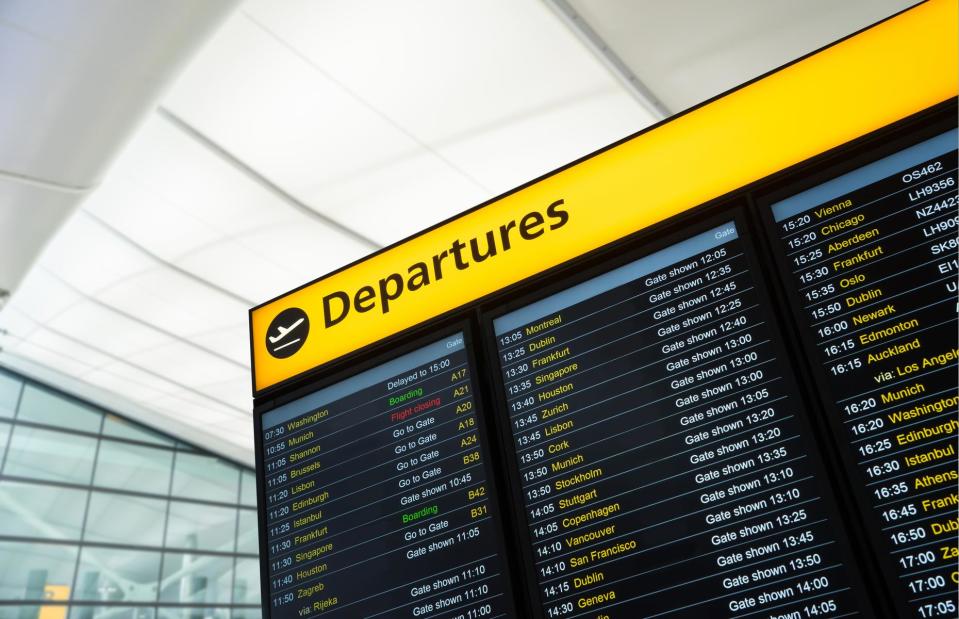
alice-photo/Shutterstock
In the past, commercial air carriers ran a handful of routes. For example, Virgin Atlantic offered just one from London to New York. Now it has more than 30. British Airways has increased its offering by 43% since the 1980s. The world is more connected than ever.
You'll meet more computers than people at today's airports
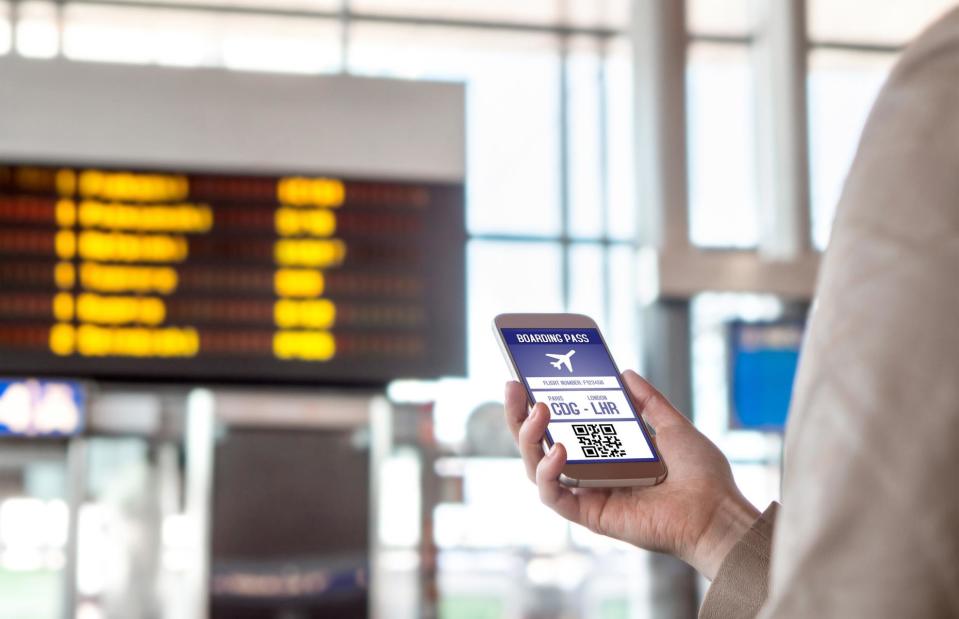
Tero Vesalainen/Shutterstock
Rewind 50 or 60 years and your airport experience would be very different. There were no automated boards, tickets were written out by hand and you'd be greeted by an actual person at the check-in desk. Today, most people check-in online before they even reach the airport. Now you can leave your bag at a self-service bag drop, pass through an automated passport-control gate and store your ticket on your smartphone.
Today's in-flight entertainment is all about technology too
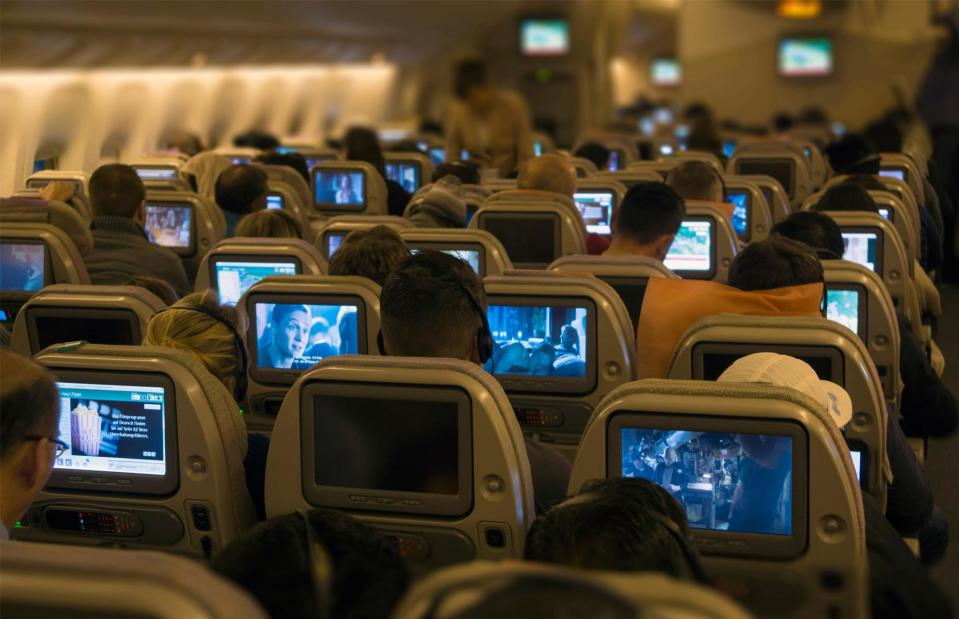
imageBROKER.com GmbH & Co. KG / Alamy Stock Photo
In-flight entertainment is a whole different ball game today. Most passengers spend long flights plugged into hi-tech entertainment systems. Movies, games and box sets are at the modern traveller's fingertips and in-flight wifi is becoming increasingly common. Norwegian and Emirates are among the airlines that allow you to connect for free.
Airports are now destinations

Chris Putnam/Alamy Stock Photo
The airports of yesteryear had one main purpose: to see travellers safely on board their flight. Today, airports offer everything from shops and restaurants to yoga classes and ice skating. When it comes to combatting pre-flight boredom, you’ll be hard-pressed to find a better passenger experience than the one served up by Singapore’s Changi Airport. At the heart of its retail and entertainment complex, surrounded by a lush green forest, sits the world’s tallest indoor waterfall (pictured). Elsewhere, there's art exhibitions, video game zones, rock climbing walls and even a massive slide to be enjoyed.
Feeling supersonic was once an option

Greg Bajor/Alamy Stock Photo
No look at the history of air travel would be complete without a discussion of the iconic Concorde. Launched in 1969, the supersonic plane was the result of a joint effort between British and French aero-engineering firms. It travelled faster than the speed of sound, cruised at 1,340 miles per hour (2,158km/h) and could fly between London and New York in around three-and-a-half hours (the record was two hours and 52 minutes). These groundbreaking planes were incredibly expensive to run. With a one-way ticket costing over £4,000 ($5,364), it was an unaffordable option for most. British Airways and Air France retired them in 2003.
The planes have got bigger
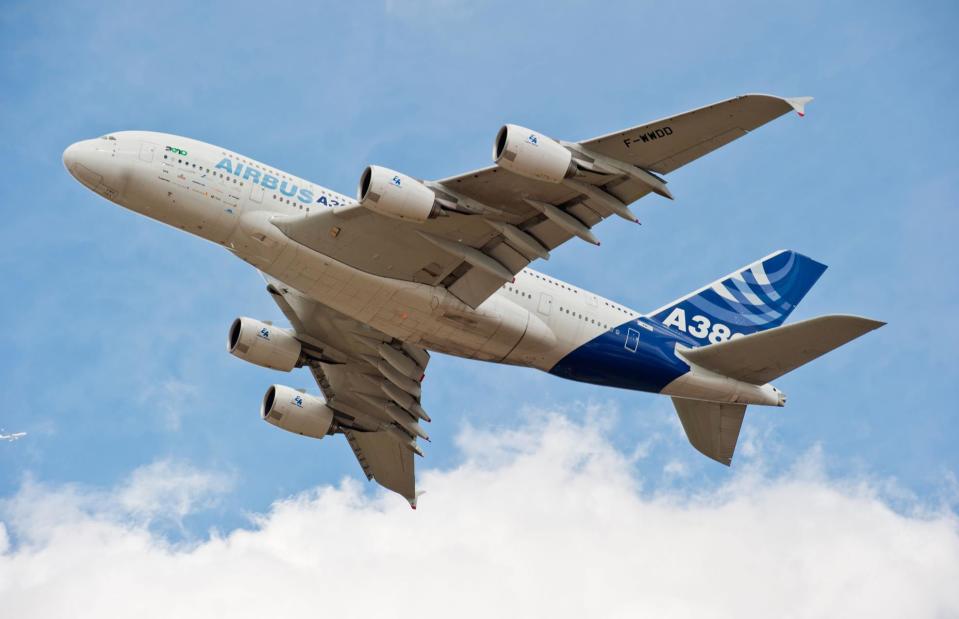
Alan Smithers/Alamy Stock Photo
Nothing sums up the human race’s appetite for air travel like the Airbus A380. Since it first took to the skies in April 2005, the world’s largest and most spacious passenger aircraft has flown over 800,000 flights and carried more than 300 million passengers. Airbus ceased production of the model in 2021, due to the groundings and drop in demand caused by the COVID-19 pandemic. Since then, the popularity for long-haul flights has bounced back in style and airlines have returned this famous double-decker model to service. The A380 looks set to continue flying for decades to come.
A virus changed everything
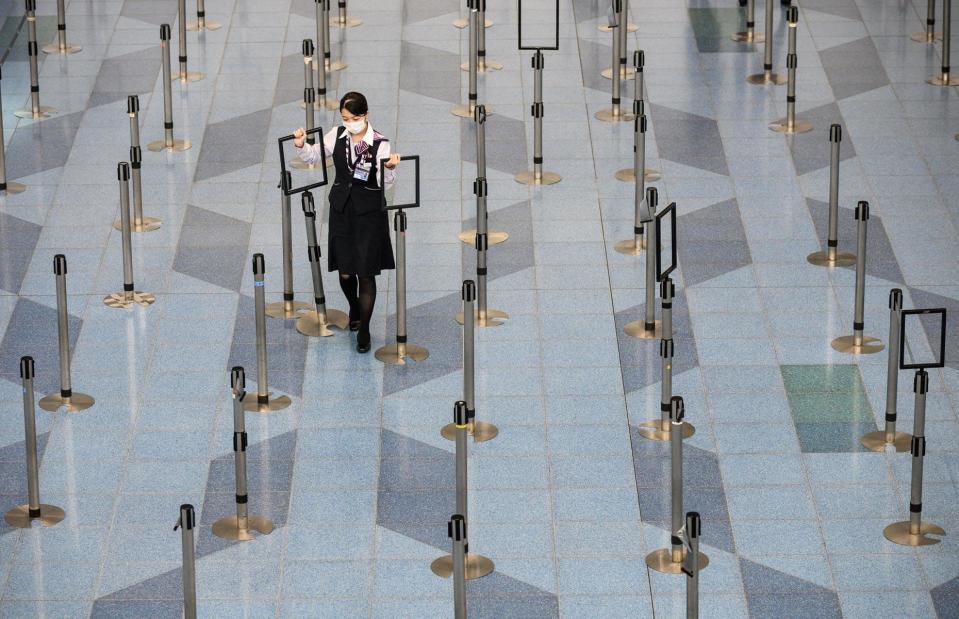
PHILIP FONG/AFP via Getty Images
In 2020, the COVID-19 pandemic hit global tourism and the air travel industry hard. Travel bans, quarantine restrictions and lockdowns that affected almost 50% of the world’s population meant many airlines were forced to cut their total number of flights by over 90%. Some of them stopped flying completely. This had a knock-on effect that impacted airports everywhere, with many of them closing as a result. It is thought that the aviation sector lost £160 billion ($200bn) between 2020 and 2022.
But air travel has bounced back
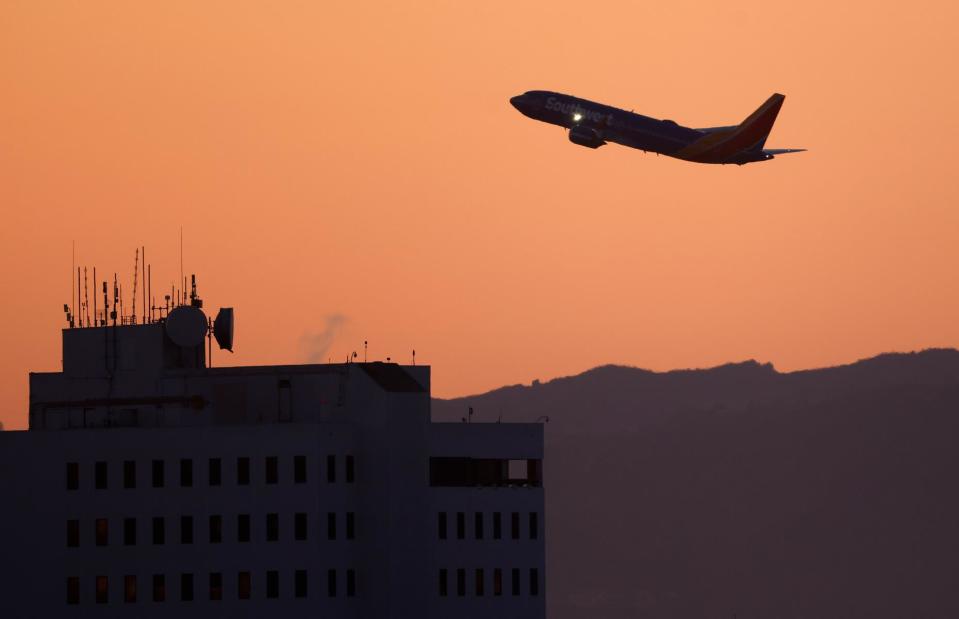
Kevin Carter/Getty Image
After the cancellations and groundings of the pandemic, a time when the air travel sector was struggling to survive, airlines have been making a good recovery in recent years. From the existential crisis the industry faced at the height of the lockdowns, when huge swathes of the global population were unable to fly, to global air traffic returning to the levels seen in 2019, it seems that people’s desire to hop on a plane is as strong as ever. Chaotic scenes seen at some airports in recent years have, in many cases, been a result of airlines not having enough staff to satisfy demand.


